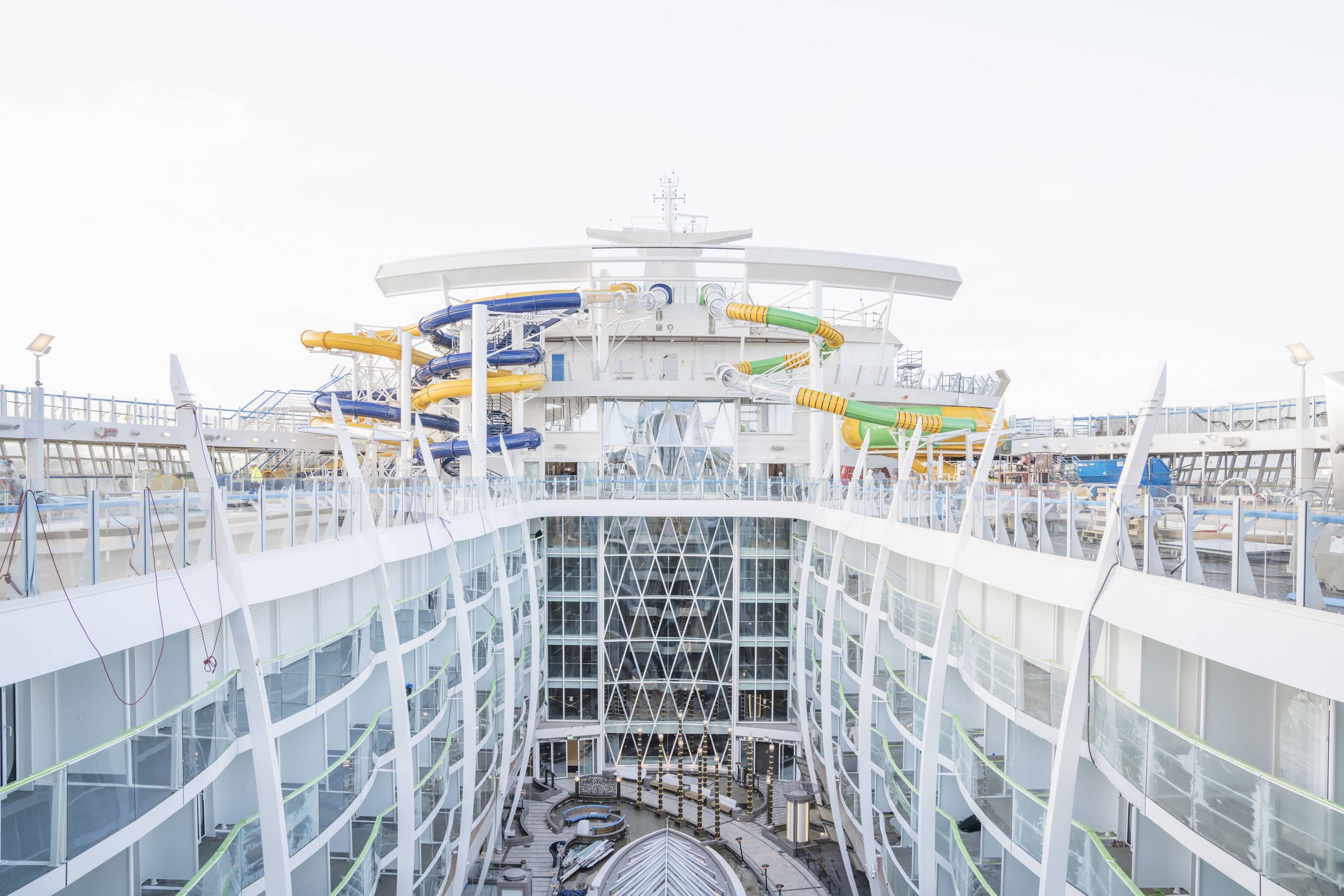Table Of Content

In the unlikely event the morgue is fully occupied, the crew has contingency plans to use other refrigerated spaces or even cabins to hold bodies respectfully. Though large numbers of passengers cruise every year, deaths during cruises are actually quite rare events statistically. Counseling services may be offered to those traveling with the deceased or any crew/passengers deeply affected by the event. While clinical and somber in feel, the morgue allows bodies to be safely contained with proper respect until arrangements can be made at the next port. The morgue is usually located out of the way from main passenger areas, often on one of the lower decks of the ship without windows. This provides privacy and reduces the chance of passengers accidentally encountering the morgue.
Port Canaveral, FL
This short video features an onboard morgue on the Carnival Fantasy cruise ship (one of the smallest Carnival cruise ships at the time of service). The morgue on a cruise ship is typically located on the lower decks, away from the high-traffic passenger areas. In rare instances on small vessels with fewer morgue spaces, there have been reports of bodies stored in the ship’s large freezers or refrigerators, depending on the available cooling options. Cruise lines entertain other superstitions, like appointing godmothers to bless new vessels and ensure the safety of passengers and crew.
Many ships don’t have a Deck 13
It’s important for cruise lines to respect and accommodate these beliefs while still fulfilling their duties. The lower deck location of the morgue facilities allows for easy access for the crew while maintaining privacy for the passengers. If the body is far from a homeport or has no homeport, it must be repatriated from some location. For example, if someone passes away in the South Pacific, the body tends to remain in the morgue until it returns to a major port, as few islands can handle repatriation. Authorities in third-world infrastructures can refuse to allow the remains off a ship.
What Happens When a Passenger Dies on a Cruise Ship?
Most vessels are required to have a morgue and additional body bags in the event of an emergency. It is unpleasant to contemplate the possibility of a passenger death occurring on a cruise ship, but unfortunately, it is not an uncommon occurrence. It is important to be aware of what happens in such situations and to know your rights as a passenger.
A lot of travel insurance plans will cover repatriation costs, but not all. But this is another example of why insurance is a must on a cruise holiday. Approximately 200 people die across all cruises worldwide per year. Proper coded communication ensures the ship’s well-trained staff is ready to manage any situation professionally. The coded language allows cruise staff to respond promptly and discreetly without alarming other passengers, especially for sudden deaths that need to be handled with sensitivity. Given about 200 deaths annually among 20 million cruise passengers, the death rate is approximately 1 in 100,000 passengers.
Do Cruise Ships Have Morgues Onboard? (Why & where?)
No matter what the arrangements are, the cruise ship staff will do everything they can to make sure that the process is as smooth as possible for the family during what is undoubtedly a difficult time. In part, it depends on where the cruise ship is traveling; larger port cities are more likely to accept a body and deal with the issue, while a small island location may not. When someone dies on a cruise ship, the ship’s doctor will pronounce the person dead and then notify the cruise captain of the death.
Look Inside A Cruise Ship Morgue
It’s not uncommon for more than one passenger to pass away during a cruise. As the ship reaches its next port, arrangements are made for the body to be unloaded and transferred to local authorities. Cruise lines have established procedures in place to coordinate with these authorities and ensure a smooth transition.
Initial Steps When a Passenger Dies on a Cruise Ship
Whether you die on a ship or on land, cruise lines don’t offer a burial at sea. However, many do offer services that allow ashes to be scattered at sea. It varies by cruise line, but some offer dedicated ceremonies for this type of service. Understandably, there aren’t many videos of cruise ship morgues available online.
TikToker alleges morbid reason behind ice cream giveaways on cruise ships - The Independent
TikToker alleges morbid reason behind ice cream giveaways on cruise ships.
Posted: Thu, 29 Feb 2024 08:00:00 GMT [source]
The Guest Care Team also gives free phone and internet while onboard, allowing loved ones to make arrangements. The morgue is usually found on the lowest ship deck, away from guests. It is a refrigerated room made of stainless steel with individual compartments. Generally, the bigger the ship, the more shelves are found in the morgue. Morgues tend to be small and can typically hold three to six bodies.
Cruise ship morgues are not publicized, and this may come as a surprise to many passengers. However, it’s a necessary facility that ensures respect, care, and proper handling of those who have passed away during their voyage. However, it’s essential to be informed about the procedures and facilities available, such as the presence of a cruise ship morgue. The cruise ship will assist the deceased’s family as reasonably possible with travel, lodging or other logistics during this difficult time.
They can drive the travel companions to a nearby hotel if they want to disembark and remain with them until they return home. Any small disruptions are handled sensitively by the well-trained crew. The lighting is bright fluorescent to allow clear visibility when working. Powerful ventilation and cooling systems preserve bodies and prevent odors.
Arrangements will then need to be made to get the body home, either by return journey or disembarking the body at a port of call. All oceangoing cruise ships are required to have a morgue onboard along with body bags in which to store the body. Being so close to land they are not required, although provisions would be in place to deal with a body in the event of a death. With large populations comes the inevitability of accidents, medical emergencies, and, unfortunately, deaths. Having a morgue on board allows cruise ships to handle such situations discreetly and efficiently.
Many crew members work seven days a week during the time they’re onboard, and for more hours a day than the typical American works. They’re traveling around the world, but they don’t often get time to see the ports. Through this and other emergency procedures, cruise staff uses specific codes based on the circumstances. As said one of our recent blogs, why do I need cruise travel insurance? These medical centres can handle a range of health issues, from minor injuries to more serious medical emergencies.
Whatever the case, there is a morgue on the ship equipped with body bags, ready to hold a body until the deceased can be moved off the ship once it gets to a port. As the demographic of cruise passengers tends to skew towards older individuals, who are more likely to book longer journeys, the likelihood of deaths due to natural causes increases. However, the exact capacity of the morgue can vary depending on the size of the ship. Larger ships tend to have larger morgues, as they accommodate more passengers. While planning your dream vacation on a luxurious cruise ship, the last thing on your mind is probably what happens in the unfortunate event of a death onboard. Port authorities assist with customs clearance and transfer to a local funeral home or morgue arranged by the deceased’s family.
Once the deceased and their loved one arrive at the closest port of call, the port’s country must be able to issue a death certificate recognized in the deceased’s home country. For their loved ones, this can be a long, painful, and costly process. It will involve a lot of paperwork, as well as embassy support if needed, and translation services if there are language differences. Sailing along on a cruise ship is one of the most fulfilling adventures you have on a vacation. The draw of the ocean can be mysterious and intriguing, but remember that it’s not exempt from accidents or crime. Falls from great heights, choking, drowning, suicide, and even murder are all incidents that can occur during your sea voyage.
“Operation Bright Star,” is used for serious medical issues, while “Operation Rising Star,” is used in the event of a death on board. In the event of a death, cruise lines aim to handle the situation with sensitivity, minimising any disruptions to the overall cruise experience. Falls include both accidental falls and intentional jumps, which could be suicides or homicides. Cardiac incidents only include deaths on board the ship and not those after being transferred to a hospital or a shore facility. Therefore, the actual number of cardiovascular deaths is higher than reported. In a high profile example of one such incident, in September 2013, British journalist Sir David Frost died aboard the Cunard cruise liner the Queen Elizabeth, on which he was booked as a speaker.

No comments:
Post a Comment